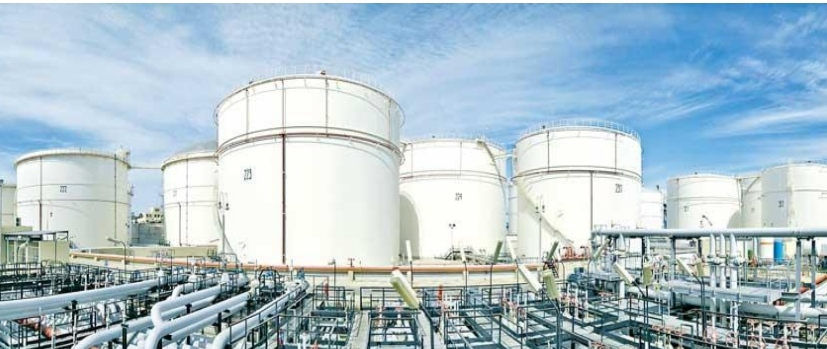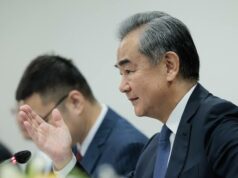Sri Lanka has to act more than India on Oil Tank Farm

By
Kelum Bandara
The rationale behind the Trinco Oil Tank Farm project is more strategic than economic as a result
When Indian Prime Minister Narendra Modi visited Sri Lanka in March, 2015, he proposed the development of Trincomalee as a petroleum hub
For Sri Lanka, the economic value of these tanks is huge because the tanks can be well used for energy security of the country
It has become a matter of concern for Indian strategic planners who worry that such Chinese influence will imperil their security interests at one point in the future
The joint development of the Trincomalee Oil Tank Farm entails more strategic interests than commercial interests for India. Trincomalee is strategically positioned, and it is an indispensable location as far as security interests of the major countries such as India and the United States in the Bay of Bengal are concerned.
Security concerns have grown in this region of the Indian Ocean due to the battle for competition between India- China for both economic and strategic influence.
For India, it is vital to have some control over the oil tank farm. Therefore, the latest project has to be viewed from a strategic angle though economic and commercial aspects cannot be ruled out. Energy Minister Udaya Gammanpila himself admitted it.
Now the fresh agreement has been signed. The Cabinet clearance has also been given to proceed with the implementation of it. Of 99 tanks, 14 tanks already being used by the Lanka Indian Oil Company (LIOC) will be retained by them for 50 years in terms of the latest deal. Besides, the Ceylon Petroleum Corporation will keep 24 tanks for development. The newly formed Trinco Petroleum Terminal Ltd, a joint venture between the CPC and the LIOC, will develop the remaining 61 tanks.
For Sri Lanka, the economic value of these tanks is huge because the tanks can be well used for energy security of the country. From an Indian perspective, the tanks can be utilised in the development of Trincomalee as a petroleum hub for the provision of bunkering services to ships originating from the east coast of India. India has sensed the importance of strategically positioned Trinciomalee for its national security interests for a long time. For that very reason, the joint development of these tanks was envisaged in the Indo-Lanka accord signed way back in 1987. Taking a step further, another agreement was signed in 2003. When Indian Prime Minister Narendra Modi visited Sri Lanka in March, 2015, he proposed the development of Trincomalee as a petroleum hub. Indian interest in this case is obvious.
Chinese presence
India- China rivalry plays out openly in the region, and at times even within Sri Lankan territory with both trying to outperform each other in securing economic projects with strategic components attached.
Chinese presence has increased in the region following the expansion of its economic and security interests. It has developed ties with the countries in terms of implementation of key infrastructure projects such as ports, airports, railways and expressways in the littoral states of the Indian Ocean.
It has become a matter of concern for Indian strategic planners who worry that such Chinese influence will imperil their security interests at one point in the future. The theory of encirclement of India by China has been trotted out as a result. As such India is keen to gain its influence further in the region, a move that runs counter to China’s growing development of connectivity between its western provinces with the countries of the Bay of Bengal.
The rationale behind the Trinco oil tank farm project is more strategic than economic as a result.
Sri Lanka is at pain to maintain a foreign relationship that is balanced between China and India. China has developed the Hambantota Port in the south of Sri Lanka, a move India does not like. Under the current circumstances, the Sri Lankan government appears to have taken a fresh approach to strike a balance in its ties between two strategic rivals- India and China. Sri Lanka is renewing its efforts to build trust with India.
Sri Lanka, hit by the pandemic and the worst ever foreign crisis, has been left with little choice other than to look to these two economic powerhouses in the world for succor. Both the countries offered to extend cooperation, but the government is placed to walk a tight diplomatic rope.
Finance Minister Basil Rajapaksa undertook a visit to New Delhi last month against such a backdrop to woo support from India to tide over the current crises triggered both by the pandemic and the foreign exchange crisis.
India offered much needed assistance on four pillars – food and health security, energy security, financial package to get over foreign exchange crisis and facilitation of Indian investments here. India persisted with the request that Sri Lanka should reciprocate before such assistance is extended under these four- point programme.
The agreement for the joint development of the Trinco oil tank farm was worked out accordingly. Afterwards, India extended the support as agreed initially during talks between the Finance Minister and the India leaders in New Delhi last time. It came as a lifeline to Sri Lanka grappling with a crisis in the energy sector in addition to facing impending food security issues.
The oil farm development agreement has also helped trust- building between the two countries after Sri Lanka scrapped the Memorandum of Understanding (MoU) during the time of the last government to develop the East Container Terminal of the Colombo Port.
If the full potential of the oil farm is realized under this agreement, it will propel the image of Trincoamalee, the eastern capital of Sri Lanka, as an energy hub serving naval trade in the Bay of Bengal. Sri Lanka has to act more on this since it is more beneficial to Sri Lanka than to India in economic and commercial terms.
Source: Daily Mirror



